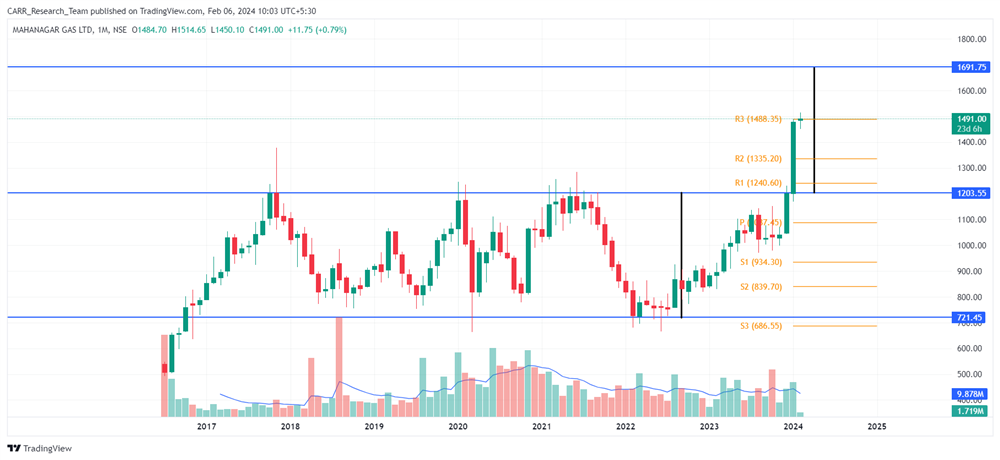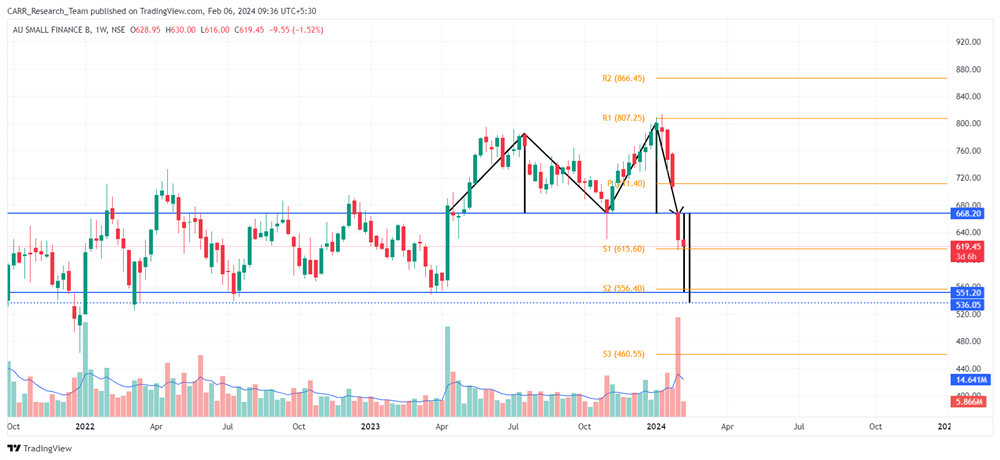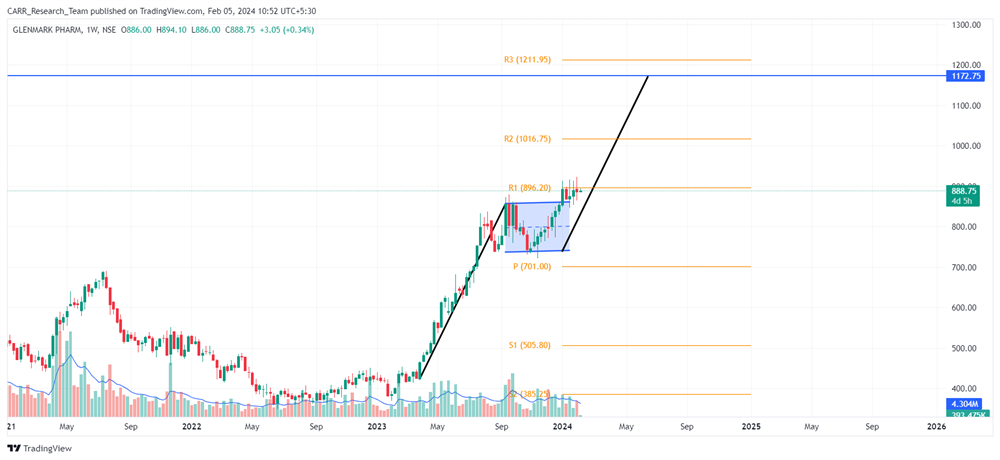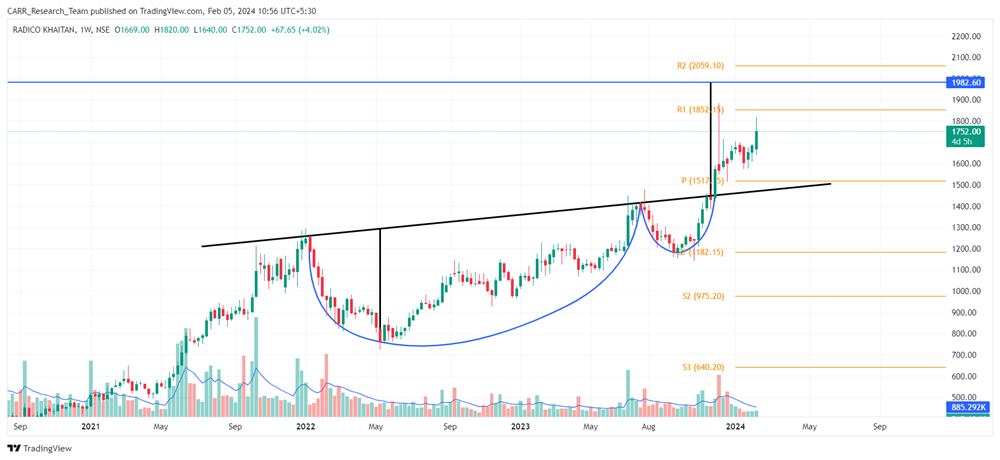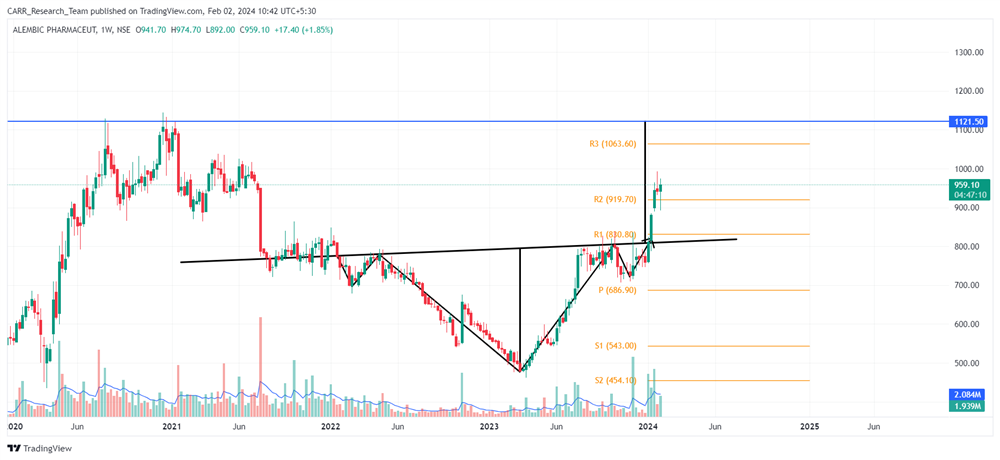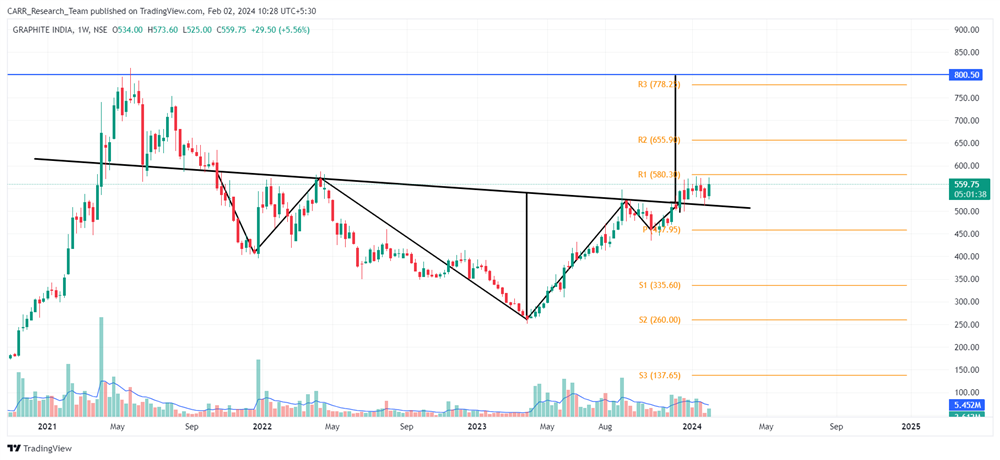Stock name: Bharat Petroleum Corporation Ltd.
Pattern: Resistance breakout
Time frame: Weekly
Observation:
Over an extended duration, the stock has moved between 260 and 530, creating a parallel channel from 2016 to 2024 on its weekly chart. In January 2024, the stock experienced a breakout from the parallel channel's resistance, backed by higher-than-average trading volume. Post breakout the stock moved in the upward direction. According to technical analysis, the stock may see further upward movement if it can sustain the momentum generated by the breakout.
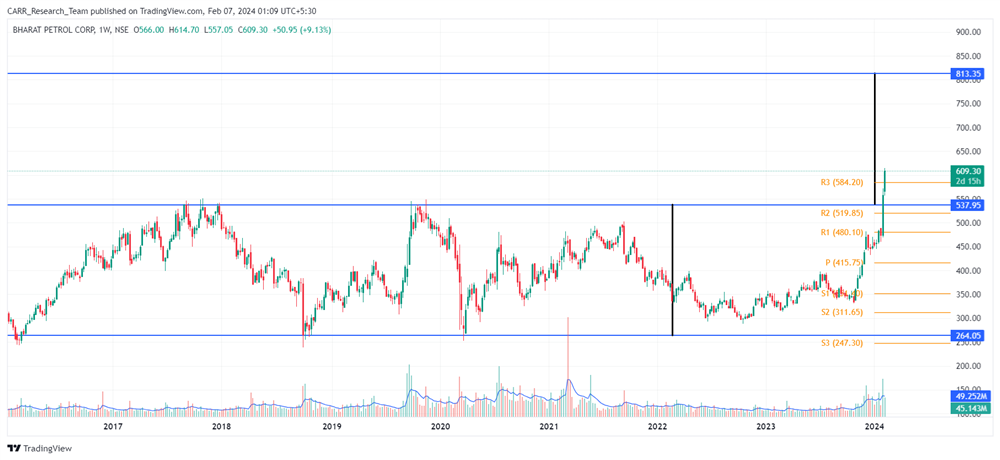
You may add this to your watch list to understand further price action.
Disclaimer: This analysis is purely for educational purpose and does not contain any recommendation. Please consult your financial advisor before taking any financial decision.

Stock name: Bank of Baroda
Pattern: Rounding bottom pattern
Time frame: Monthly
Observation:
Following its all-time high in January 2015, the stock experienced a downward trend until recently when it began an upward trajectory. Presently, the stock has reached the same level as in 2015, forming a rounding bottom pattern from 2015 to 2023. Towards the end of 2023 in the month of December 2023, the stock has registered a breakout, supported by average trading volume. Post-breakout, the stock is on an upward trajectory, and technical analysis suggests that the stock may see further upward movement if the current momentum is sustained.
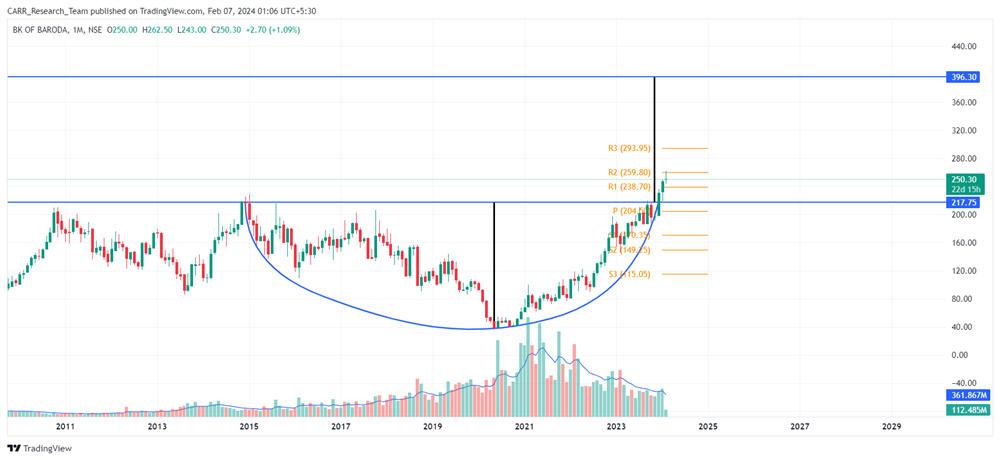
You may add this to your watch list to understand further price action.
Disclaimer: This analysis is purely for educational purpose and does not contain any recommendation. Please consult your financial advisor before taking any financial decision.
News for the day:
- The Reserve Bank of India (RBI) is considering issuing a clarification regarding Paytm due to its substantial user base. This move comes amid concerns and speculations surrounding Paytm's financial health. The potential clarification aims to address uncertainties and reassure users and stakeholders about the stability of Paytm's operations. The RBI's intervention seeks to provide transparency and alleviate any apprehensions within the market regarding the popular digital payment platform.
- Prime Minister Narendra Modi has highlighted that the energy sector will receive a significant portion of infrastructure investment in India. This underscores the government's commitment to enhancing energy infrastructure to meet growing demands and promote sustainability. The focus on the energy sector aligns with efforts to boost energy security and support economic growth in the country.
- The Indian government is exploring the possibility of leasing strategic oil reserve space to private companies as a strategy to enhance energy security. This move signifies a shift towards involving the private sector in efficiently managing and maintaining strategic oil reserves to address dynamic challenges in the global oil market.


